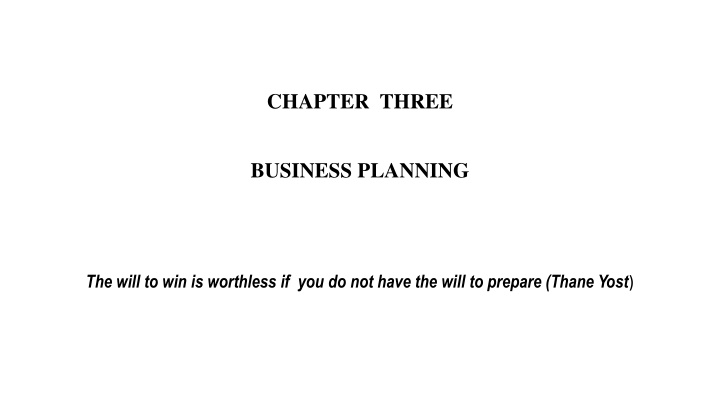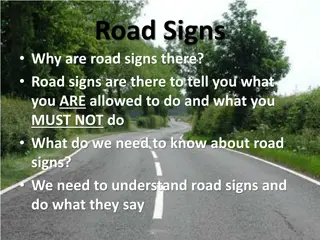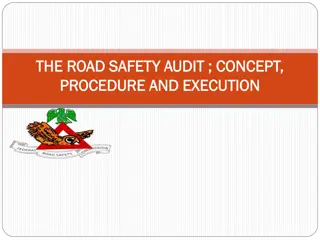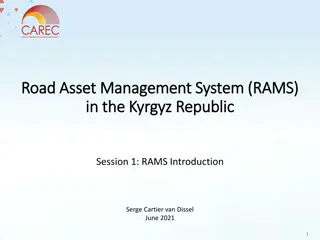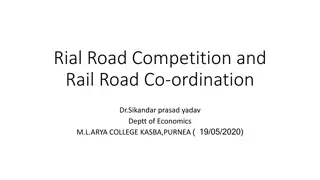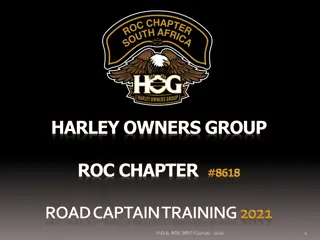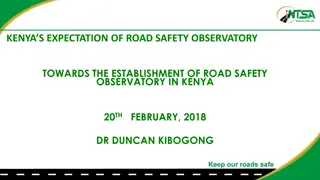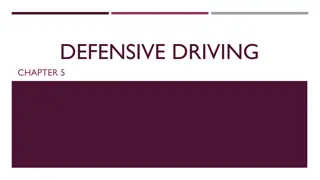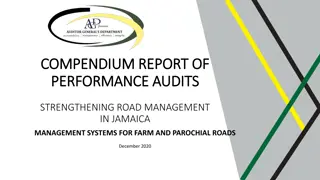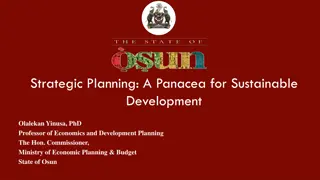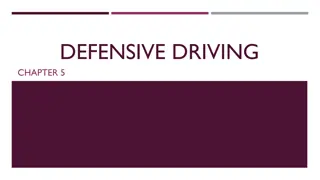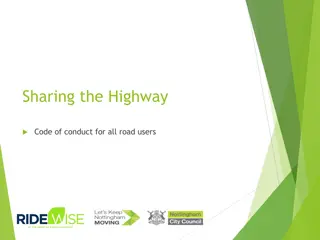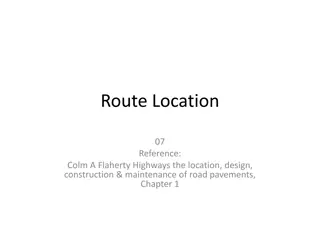Business Planning: The Crucial Road Map for Success
A business plan is a vital tool for entrepreneurs, providing a roadmap to navigate the journey of starting and growing a business. It outlines objectives, strategies, and projections, guiding decision-making and attracting investors. This comprehensive document serves both internal and external purposes, aiding in goal execution and stakeholder engagement. By detailing financial prospects, business concepts, and action steps, a well-crafted plan enhances clarity, direction, and long-term success in today's competitive landscape.
Download Presentation

Please find below an Image/Link to download the presentation.
The content on the website is provided AS IS for your information and personal use only. It may not be sold, licensed, or shared on other websites without obtaining consent from the author.If you encounter any issues during the download, it is possible that the publisher has removed the file from their server.
You are allowed to download the files provided on this website for personal or commercial use, subject to the condition that they are used lawfully. All files are the property of their respective owners.
The content on the website is provided AS IS for your information and personal use only. It may not be sold, licensed, or shared on other websites without obtaining consent from the author.
E N D
Presentation Transcript
CHAPTER THREE BUSINESS PLANNING The will to win is worthless if you do not have the will to prepare (Thane Yost)
What is a business plan? Abusiness plan is: is a written document describing all relevant internal and external elements and strategies for starting a new venture a comprehensive set of guidelines for a new venture. a detailed plan setting out objectives of a business over a stated period, often three, five, or ten years. a written statement that describes and analyzes our business and gives detailed projections about its future.
Contd is the road map that answers the following basic questions: 1. Where am I now? 2. Where am I going? 3. How will I get there?
Purpose of Business Plan Some entrepreneurs simply start a business without understanding the benefits of formal planning. However experts strongly recommend that preparing a business plan is extremely important in todays dynamic business environment. For most ventures a business plan is a dual purpose document used both inside and outside the firm.
Contd Inside the firm, the plan helps the company to develop a road map to follow in executing its goals and strategies Outside the firm it introduces potential investors and other stakeholders to the business opportunity the firm is pursuing and how it plans to pursue it.
Contd ABusiness plan has the following specific purposes among others: Helps to attract finance/Money- Most lenders or investors require a sound business plan before they consider your proposal for funding. Helps you keep on track- Awritten business plan gives you a clear course toward the future and makes your decision making easier. Lets you Improve your Business concept by considering alternative scenarios- Writing a plan allows you to see how changing parts of the plan increases profits or accomplishes other goals.
Contd Lay out a master blue print- It shows you the logical progression of steps needed to reach your stablished goals. Communicate your master plan to the members of your team-allow you to communicate about the goals and action steps to realize them. Entails taking a long term view of the business and its environment focus individual efforts and assist personal motivation allocate the company s resources towards specific ends underpin the process of control
Business plan helps the insiders and outsiders in the following ways helps the entrepreneur and the management team focus on important issues and activities for the new venture helps the entrepreneur communicate his or her vision to current and prospective employees of the firm Helps them to convince the outsiders Help the employees to understand the goals and objectives of the business and what is expected of them to realize the goals
Contd suppliers want to see a business plan before signing a contract to produce either components or finished products or even to supply large quantities of materials on consignment. Customers may also want to review the plan before buying a product the may require significant long-term commitment.
Contd investors want to make sure that the entrepreneur is compliant and willing to accept their involvement in the business and how much rates of return is expected lenders are primarily interested in the ability of the new venture to pay back the debt including interest within a designated period of time.
Guidelines to Write an effective Business Plan 1. Keep confidentiality- be cautious about divulging certain information such as the details of a technological design, highly sensitive marketing strategy and etc. indicate that all information in the plan is proprietary and confidential and request all recipients of the plan to acknowledge their receipt in writing. 2. Use good grammar- review it again and again or find a good editor so that it will become more attritive to the readers.
Contd 3. Limit the presentation to a reasonable length- The goal is not to write a long business plan, but to write a good business plan so identify and briefly describe the important factors in an organized way. 4. Go for an attractive, professional appearance- add interest and aid readers by using visual aids, such as graphs, exhibits, and tabular summaries and etc.
Contd 5. Provide solid evidence for any claims- Provide factual support for any claims or assurances made. 6. Describe the product in lay terms- Present your product/service in simple, understandable terms, and avoid the temptation to use too much industry jargon. 7. Emphasize the qualifications of the management team - investors first look at the management team in terms of relevant experience and only then assess the product/service.
Contd 8. Analyze the market thoroughly- show in your plan where your business will fit in the market and what your competitors strengths and weaknesses are Include financial statements that are neither overly detailed nor incomplete- 9. provide incomplete financial statements, give exhaustive list of the assumptions that underlie the financial information, and make sure that the numbers make sense. 10. Don t hide weaknesses identify potential fatal flaws- be open and straightforward about potential problems and have an action plan to effectively addresses them.
When Business Plans Are Produced? 1. At the start up of A new business: After the initial stage of developing ideas and feasibility study are over. 2. Business Purchase: Buying an existing business need it for a detailed plan tests & the sensitivity of changes to key business variables. This helps to understand the level of risk that are accepted and the likelihood of rewards being available for the buyers.
Contd 3. Ongoing process: Ongoing review of progress, against the objectives & important dynamics in environment. A business plan should be the live, strategic, and technical planning focusing on how a small business responds to the inevitable changes around it. 4. Major decisions: Even if planning is not carried out on a regular basis, it is usually instigated at a time of major change.
Contents of a business plan It is important to note that the format of a business plan, the amount of detail it contains, and the visual presentation may vary according to the intended use and readership. However a winning business plan should not miss important elements needed to attract finance and other valuable information regarding the establishment and growth of the venture. Most business plans contain the following major sections though there are still variation in terms of order and title.
Contd 1.Cover Page - name of the business, its address and phone number, and the date the plan was issued. 2. Table of content- allow the reader to turn directly to the sections desired. 3. Executive Summary- a one- to two-page overview of your entire plan. used to spark the reader s interest in the business and to highlight crucial information about company information, financial data, market information and etc. 4.Company information- describe the background of your company, your choice of legal business form, and the reasons for the company s establishment. . 19
Contd 5. Environmental and industry analysis show how your business fits into larger contexts environmental analysis shows identified trends and changes that are happening at the national and international levels that may influence the future of your small business. Asses the economic, competitive, legal, political, cultural, and technological factors You should do an industry analysis describing the industry within which your business operates. . 20
Contd Cont d Describe the major competitors in your industry, their growth trends, their exit and entry situation. 6. Products or Services description Give detail description of your product or service How your products/service are different from those currently available in the market? If possible ( appropriate) include drawings or photos of the proposed product. Describe any patents or trademarks that you hold . 21
Contd Cont d 7. Marketing research and evaluation You need to present evidence that a market exists for your business. Indicate your primary and secondary sources of data the methods you used to estimate market size and market share. Involves the identification of: Target markets and market segmentation Market trends Competition Market Share-percentage of the total industry sale Marketing Plan-how you intend to achieve sales forecast . 22
Contd Consider the following as part of marketing plan Pricing Promotion Place/distribution Service and warranty Policies-if engaged in products that require service 23 .
Contd Cont d 8. Manufacturing and operations plan Describe elements related to your business s production. Describe facilities, location, space requirements, capital equipment, labor force, inventory control system, and purchasing issues. 9. Management Team Show that your team is balanced in terms of technical skills (possessing the knowledge specific to your type of business), business skills (the ability to successfully run a business), and experience. . 24
contd 10.Timeline- Create a timeline, outlining the interrelationships and timing of the major events planned for your venture. 11. Critical risks and assumptions assumptions such as how your business will operate, what economic conditions will be how you will react in different situations risks and assumptions could relate to your industry, markets, company, or personnel. This section gives you a place to establish alternate plans in case the unexpected happens. . 25
Contd Thus major trends, problems, or risks that you think you may encounter should be indicated 12. Benefits to the Community: Describe the potential benefits to the community. Human development- providing technical skills or other trainings, that lead to career advancement, Community development- improving standard of living Economic development- like number of jobs created . 26
Contd 13. Exit Strategy consider how you intend to get yourself (and your money) out of it. Do you intend to sell it in 20 years? Will your children take it over? How will you prepare them for ownership? . 27
Contd 14. Financial Plan financial plan should include the following statements. historical statements and pro forma projections for existing businesses, and only projections for startups) 1. Sources and uses of funds- this section shows where capital comes from and what it will be used for 2. Cash-flow projections- shows the amount of money a business has on hand at the beginning of a time period, receipts coming into the business, and money going out of the business during the same period . 28
Contd 3. Balance sheet- A financial document that shows the assets, liabilities, and owner s equity for a business. 4. Profit-and-loss statement- A financial document that shows sales revenues, expenses, and net profit or loss. 5. Breakeven point- The point at which sales and costs are equal and a business is neither making nor losing money. 29 .
Contd 15. Appendix R sum s of owners/managers advertising samples brochures, organization chart 30 .
Business Plan Mistakes Depending on outdated financial information or industry comparisons. Trying to impress financiers with techno jargon. Better to use easy and common languages to allow others understand the plan Lacking marketing strategies Being overly optimistic. Ignoring the macro environment. Misunderstanding financial information. . 31
Contd Avoiding or disguising potential negative aspects. You look naive or devious if you fail to mention possible problems, or misrepresent them. . 32
Contd Please Refer Rebert Hisrich, Michael Peters and Dean Shepherd (2017) Entrpreneurship 10th edn for the details on this template
